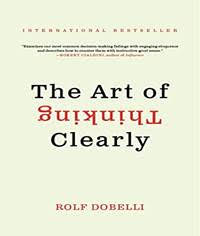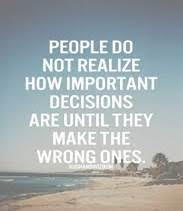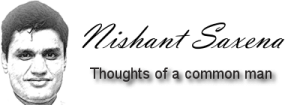The Art of Thinking Clearly
Author: Rolf Dobelli
Genre: Management

Swiss writer Rolf Dobelli, the founder of get Abstract (the world’s largest suppliers of book summaries), was sitting with Nassim Taleb (of Black Swan fame) and they were “marveling at the systematic errors in decision making that CEOs and business leaders make”. Real world decisions are often made in a vague environment, where most stakeholders will have biases and pre-conceived notions; information will not be 100% complete; there will be multiple right answers and dependencies of variables; and so on. Unless we learn the art of thinking clearly, we will routinely keep making wrong decisions.

This million-copy bestseller teaches us just how to avoid those mistakes. With loads of examples and research, it highlights 99 different mistakes many of us make in decision making. Each chapter is about 1 mistake, and is a simple 3 pages explained through anecdotes and latest research, so becomes a very engaging read.
A sample that we could all relate to…
Survivorship Bias: We see success examples around us, and hence systematically tend to overestimate the chances of success. As a professional investor, I often get tempted to invest in a start-up seeing all the hundred million valuation companies. But a more sober analysis suggests that less than 1 in a hundred reach that milestone, the more likely scenario for most investments is that they will not cross the finish line.

Swimmer’s Body Illusion: We look at the perfectly chiseled body of professional swimmers and join swimming classes hoping we will get a figure like that too. However, “they are good swimmers because of their physiques” and not the other way around. Ditto for models who sell cosmetics (they were born attractive and chosen for advertising because of their good looks… “beauty is a factor for selection and not the result”).
Sunk cost fallacy: If we have already invested a lot of time, money, energy or live in something, that itself becomes a reason to carry on, even if everyone around us knows we are “dealing with a lost cause”. E.g. both Britain and France continued to invest huge monies into Concorde knowing fully well “that the supersonic aircraft business would never work” – if only to save face and not admit defeat.

Confirmation Bias: The “mother of all misconceptions… tendency to interpret new information so that it becomes compatible with our existing theories and beliefs… we filter out any new information that contradicts our existing views.” We are on a weight loss diet, when we lose weight we pat ourselves on the back but when we gain, we take it as normal fluctuation, for months believing the diet is working while our weight remains constant!
Contrast Effect: Humans have difficulty with absolute judgements and hence judge something to be beautiful, expensive or good if we have something ugly, cheap or not good in front of us. All upgrade options exploit this: compared to a Rs. 15 lac price tag on a car, Rs. 30,000 leather seats sound like a pittance.
Envy: “Of all the emotions, envy is the most idiotic”. Paradoxically we envy people who are most like us. We are okay with, say, a musician earning much more than us, but not our peer in the same company as us. This leads to a practical error – as we do better, we keep going up and our peer group keeps becoming better. So just when we are done rejoicing over our success vs. our previous peer, a new set of benchmarks again make us envious!
Imagine 99 of these errors we all habitually make, with insightful analysis of how things actually go wrong in business and in life: Availability Bias (choosing based on what’s immediately available, rather than what’s right), Outcome bias (celebrating the outcome as proof of successful strategy when the effect may be environment or chance), Illusion of control, Self-selection bias, Action Bias and so on.

While the fallacies highlighted are insightful (even if the error is old wine like in Halo Effect, the examples given are interesting), after a while the themes become repetitive. I think the author should have combined similar ones and have a list of say 20-25 instead of 99. But even then a must-read for anyone who wants to make better choices.
Why should you read the book: To avoid making the same mistakes many of us habitually make. To become wiser and smarter. To improve our own and our organization’s decision making. The list of common mistakes almost becomes a checklist with which to review every decision.
Goodreads Link: The Art of Thinking Clearly by Rolf Dobelli | Goodreads

 This information will never be shared with third party
This information will never be shared with third party
Post A Comment
Want to join the discussion?Feel free to contribute!